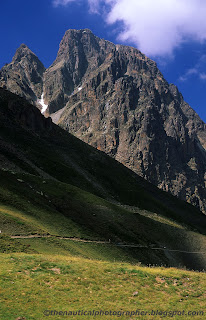Several years ago, while still navigating as a professional mariner, I made a couple of seasons on the North Sea, doing a little bit of tramp cabotage here and there. Although I don't miss it so much (nautically speaking), since that particular trade is becoming harder and harder on seafarers, it was always with pleasure that I called the English ports.
England, for the moment, still manages to keep herself as a nation of mariners. And we can see that in every coastal town. Historic vessels are recovered and dry docked for posterity. For the future generations to see. Maritime History is, itself, cherished and preserved. All that heritage is kept alive and present in everybody's hearts. Perhaps, some of the times, with a little bit of excess. Like if they are the maritime nation of the world, instead of just one more. But who can blame them? It's their History. I'm glad that they defend it.
Not so with the country where I'm coming from. We are on the exact opposite of the scale. We don't cherish our maritime traditions at all. We were the first ones departing to the Age of Discoveries. Actually, we invented the all concept. And when the others started to wake up for that new world and vision we, basically, have already discovered pretty much everything.
And then, one day, we turned our backs to the sea. And this country was forever never the same. To this day nothing happened to change that. And while our politicians only remember our maritime heritage on their empty speeches, the only true connection of Portugal to the sea remains within the dominant and elitistic social class that rule our common destiny and their sailing yachts and "wine bottle" regattas.
For the rest of us, the plebs, the Portuguese maritime History is basically written words in the school manuals. Fading through time.
Not so for the Brits. For them the sea and all connected with it is a matter of national pride. A nation's design. To be shared among all. But you would have to visit England's coastal cities to truly understand what I mean.
The Chatham docks, near the river Thames estuary, in a very British and melancholic Winter morning. Once a important naval dock, Chatham is now a port facility mainly divided in two areas: a historical one, comprising the former naval docks and buildings and also with several historic vessels to be visited and the commercial docks, where we stayed alongside for a few days, while waiting for clearance to load a bulk cargo in a terminal up the river.
Picture made with Nikon FM3A and Nikkor 28-105 AF-D kit lens.
Fujichrome Velvia ASA 50 scanned in Nikon Coolscan V ED and post-processed in Adobe Photoshop CS3.



























